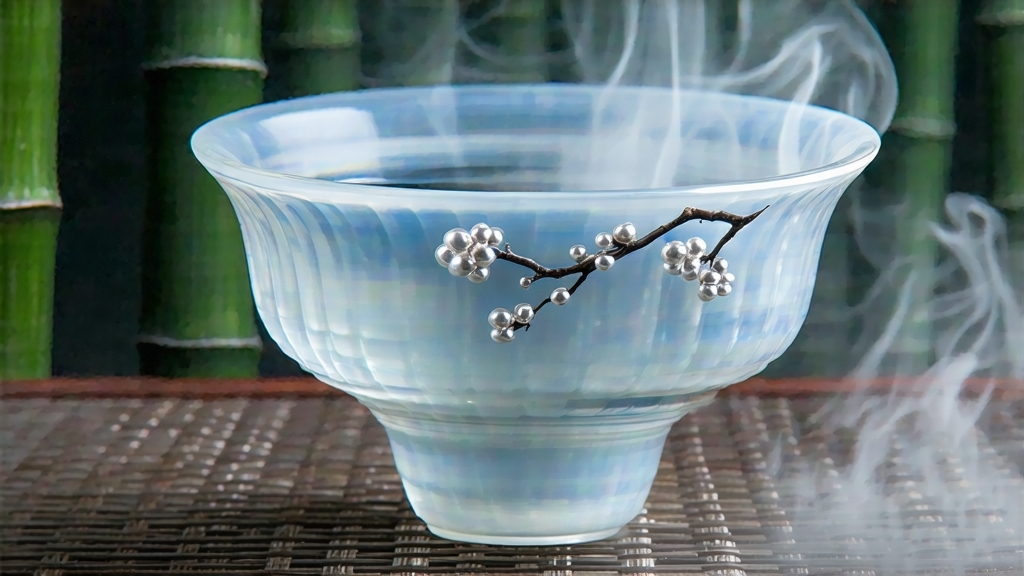
White tea is the most lightly processed of all China’s six major tea families, and within that minimalist realm Bai Hao Yin Zhen—literally “White-Hair Silver Needle”—stands as the purest expression of leaf, air, and time. To the uninitiated it can look almost like a mistake: a small handful of ivory-colored twigs that smell of hay left overnight in summer rain. Yet when these downy buds meet water they exhale a fragrance that has captivated emperors, poets, and now a new generation of global tea drinkers who seek clarity in the cup and calm in the mind.
Historical whispers place Silver Needle’s birth during the early Qing dynasty (mid-17th century) in the coastal mountains of northeast Fujian. Local chronicles credit a tea-master named Wei Zhen for first presenting the buds to the imperial court in 1796; the Daoguang Emperor reportedly praised the liquor as “moonlight frozen into nectar.” For the next two centuries the tea remained a regional tribute, its production secrets guarded by Buddhist monks who controlled the high bamboo-walled gardens of Taimu Mountain. Only after 1891, when Fuding port opened to foreign trade, did Silver Needle sail beyond China, fetching prices higher than silver itself on the London docks. The 1915 Panama-Pacific International Exhibition awarded it a Grand Gold Medal, sealing its global reputation and prompting small plantings in neighboring Zhenghe and Jianyang counties. Today genuine Silver Needle is still restricted to Fujian’s two protected origin zones—Fuding and Zhenghe—where subtropical humidity, red sandy loam, and cooling sea breezes coax the tea bush into an almost perpetual spring.
Botanically the tea relies on a specific cultivar, Fuding Da Bai Hao (“Big White Down”), whose winter-hardened buds can reach 3.5 cm in length and cloak themselves in a visible fur that reflects light like frost. In early March, when night temperatures hover around 10 °C, experienced pluckers break off only the unopened spear—never the leaf—between thumb and forefinger, a motion that must be completed before the sun climbs high enough to evaporate the dew. A single kilo of finished tea demands roughly thirty thousand buds, all picked within the narrow window of seven dawn hours. The harvest is laid in shallow bamboo baskets lined with hemp cloth so that no pressure bruises the fragile tips; within two hours the buds must reach the withering loft.
Withering is the soul of white-tea craft. Traditional sheds are second-storey rooms whose walls are latticed pine slats, allowing air to move but never gust. Buds are spread one layer thick on water-hay mats woven from local reeds; no turning is permitted for the first twenty-four hours so that enzymatic oxidation proceeds evenly from within. On the second day artisans slide the mats toward the western windows to absorb the descending sun, then back toward the east at dusk, a choreography repeated for up to seventy-two hours. When the bud stem snaps cleanly and the moisture content drops to 8–10 %, the tea is considered “alive”—aromatic yet still capable of decades of post-fermentation. Modern producers sometimes shorten this to forty hours using climate-controlled troughs set at 28 °C and 65 % humidity, but connoisseurs insist the slower route yields deeper honeyed notes and a luminous jade-green infusion. No rolling, fixing, or roasting interrupts the leaf; the only final step is a gentle charcoal bake at 40 °C for twenty minutes to remove surface moisture without sealing the bud, leaving the microscopic hairs intact.
The dry aroma is subtle: dried apricot, wheat straw, and a trace of petrichor. Upon brewing, Silver Needle performs a slow-motion ballet. Use 3 g of buds for 120 ml of water at 80 °C; a tall glass or translucent gaiwan allows observation. The first 30-second wash is discarded—not for cleanliness but to awaken the down, which loosens and drifts like plankton. The second infusion, 45 seconds, releases a pale champagne liquor whose viscosity can be felt on the lips. Flavor begins quietly, almost like hot mineral water, then expands into white peach, vanilla orchid, and a cooling hint of cucumber skin. By the third steep the cup brightens into green-gold; sweetness lingers at the back of the throat while a soft cha qi, or tea energy, descends through the shoulders like twilight. Quality